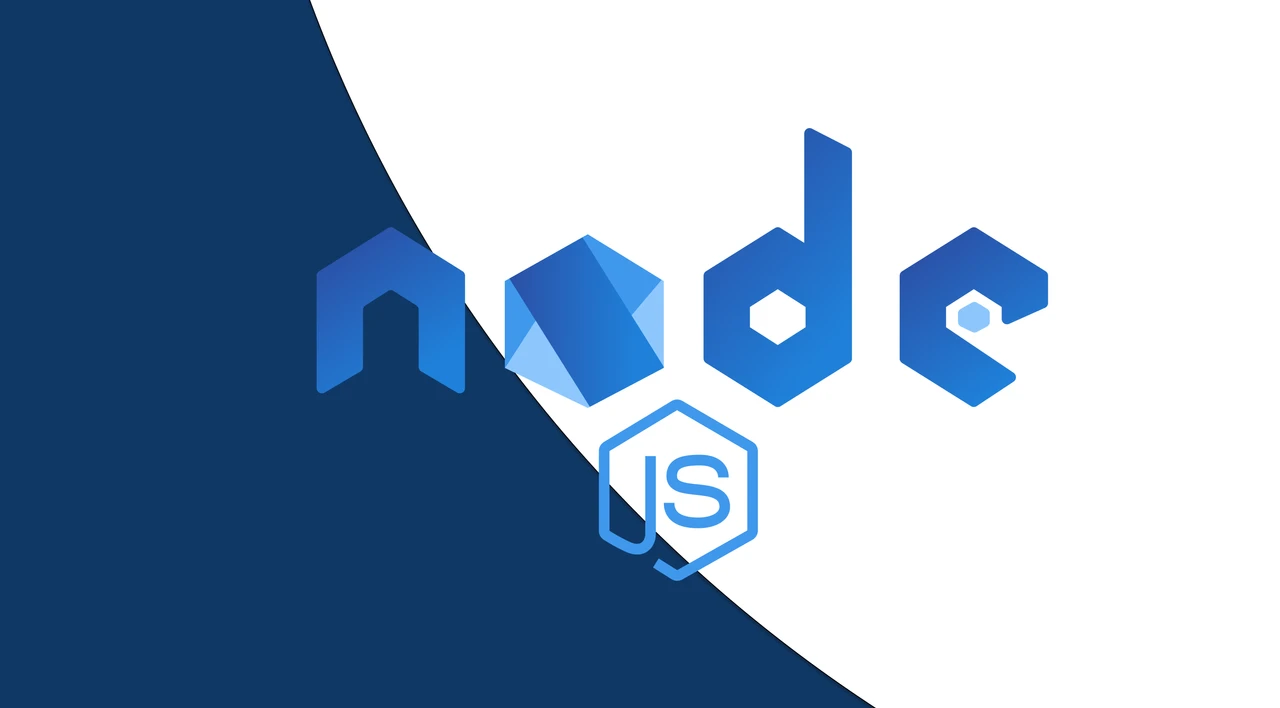Contents
Contents
Introduction
Node.js has revolutionized web development by enabling JavaScript to run on the server-side. This powerful backend framework has gained significant popularity due to its unique features and advantages. In this article, we will explore what Node.js is, its uses, advantages, and disadvantages, as well as its alternatives. We will also discuss the difference between Node.js and Express.js, along with a few popular front-end frameworks that complement it.
What is Node.js?
Node.js is an open-source JavaScript runtime environment built on Chrome’s V8 JavaScript engine. It allows developers to execute JavaScript code on the server-side, rather than just in the browser. It provides an event-driven, non-blocking I/O model, which makes it highly efficient and scalable.
What is Node.js Used for?
It is widely used for developing server-side applications, including web servers, APIs, real-time applications, microservices, and command-line tools. Its asynchronous nature makes it particularly well-suited for handling concurrent connections and performing I/O-intensive tasks efficiently.
Advantages of Node.js
JavaScript Everywhere
Node.js enables developers to use a single language (JavaScript) for both client-side and server-side development, simplifying the development process and promoting code reuse.
High Performance
Its event-driven architecture and non-blocking I/O model allow Node.js to handle a large number of concurrent connections with high efficiency, making it ideal for real-time applications.
Extensive Package Ecosystem
Node.js has a vibrant and active package ecosystem called npm, which provides a vast array of open-source libraries and modules for easy integration into its projects.
Scalability
Node.js allows for the easy scaling of applications horizontally, making it suitable for handling high traffic loads.
Community Support
Node.js has a large and active node js development services and community of developers who contribute to its growth, provide support, and share knowledge.
Disadvantages of Node.js
Single-Threaded
It operates on a single thread, which means that a CPU-intensive task can block the entire server, impacting overall performance. However, Node.js mitigates this issue by offloading such tasks to worker threads or other processes.
Learning Curve
Node.js requires developers to adopt an asynchronous programming style, which can be challenging for those accustomed to synchronous programming paradigms.
Immaturity of Some Modules
While Node.js framework has a rich package ecosystem, some modules may still be immature or lack documentation compared to more established frameworks.
Alternatives to Node.js
While Node.js has gained significant popularity as a JavaScript backend framework, there are alternative frameworks available that offer different features and characteristics. Here are a few alternative JavaScript backend frameworks and a brief comparison to Node.js:
Deno
Deno is a secure runtime for JavaScript and TypeScript, created by the original creator of Node.js. It emphasizes security, simplicity, and modern JavaScript features. Deno includes built-in TypeScript support, a secure permissions model, and a standard library that eliminates the need for external package managers like npm. Deno has a smaller ecosystem compared to Node.js, but it provides a solid alternative for developers who value security and a modern JavaScript runtime.
Hapi.js
Hapi.js is a rich framework for building web applications and APIs. It focuses on providing a highly customizable and extensible architecture. Hapi.js emphasizes configuration over convention, allowing developers to have fine-grained control over the application structure. It has a robust plugin system, built-in input validation, and extensive documentation. Hapi.js is a good choice for developers seeking flexibility and the ability to tailor their backend architecture.
Express.js
Express.js is a minimalist web application framework that sits on top of Node.js. It provides a simple and straightforward approach to building web servers and APIs. Express.js focuses on routing, middleware support, and modular development. It has a large and active community, making it easy to find resources, plugins, and middleware to extend its functionality. Express.js is often used as a lightweight alternative to more comprehensive frameworks, offering simplicity and flexibility.
Koa.js
Koa.js is a next-generation web framework developed by the team behind Express.js. It leverages modern JavaScript features and provides a more streamlined and elegant approach to building web applications. Koa.js emphasizes middleware composition and uses async/await syntax for handling asynchronous operations. It offers a smaller core compared to Express.js, providing a foundation for developers to customize their application’s features and behavior.
Nest.js
Nest.js is a progressive, TypeScript-based framework for building scalable and maintainable server-side applications. It combines elements of object-oriented programming, functional programming, and reactive programming to provide a robust architecture. Nest.js encourages the use of decorators, modules, and dependency injection to structure applications. It integrates well with other libraries and frameworks and promotes the adoption of best practices. Nest.js is suitable for developers who prefer a structured and organized approach to backend development.
These alternative frameworks each have their own strengths and characteristics, which may make them more suitable for specific use cases or personal preferences. Developers should consider factors such as community support, ecosystem maturity, learning curve, and the specific requirements of their project when choosing between these frameworks and Node.js.
Node.js vs. Express.js: What’s the Difference?
Node.js is a runtime environment, while Express.js is a minimal and flexible web application framework built on top of Node.js. Express.js simplifies the process of building web applications by providing a higher-level abstraction, routing, and middleware support. It is often used with Node.js to streamline the development of web servers and APIs.
Best Front-end Frameworks to Use with Node.js
React
React is a JavaScript library for building user interfaces. Its component-based architecture integrates seamlessly with Node.js, making it a popular choice for creating dynamic web applications.
Angular
Angular is a full-featured front-end framework that provides a comprehensive set of tools for building complex web applications. It can be combined with Node.js to build powerful full-stack applications.
Vue.js
Vue.js is a progressive JavaScript framework that is easy to learn and integrate with Node.js. Its simplicity and versatility make it a preferred choice for small to medium-sized projects.
Summary
Node.js has emerged as a powerful backend framework, enabling Flatirons developers to leverage their JavaScript skills on the server-side. Its unique features, such as event-driven architecture, high performance, and extensive package ecosystem, have made it a preferred choice for building scalable web applications. While Node.js has certain limitations, its benefits far outweigh its disadvantages. Moreover, frameworks like Express.js, React, Angular, and Vue.js complement Node.js, enhancing the development experience and enabling the creation of full-stack applications. With its growing community support and widespread adoption, Node.js continues to shape the future of web development.
Frequently Asked Questions
What is Node.js and how does it differ from traditional web servers?
It is an open-source, cross-platform JavaScript runtime environment that allows you to run JavaScript on the server side. Unlike traditional web servers that use a request-response model, Node.js operates on a non-blocking, event-driven architecture, enabling efficient handling of concurrent requests without the need for multiple threads.
Can Node.js be used for both front-end and back-end development?
Primarily, it is used for server-side (back-end) development. However, since it’s based on JavaScript, it integrates well with front-end technologies. This allows for a more unified development experience, especially when using JavaScript or TypeScript for both client and server-side code.
What are some of the popular frameworks and libraries associated with Node.js?
Some popular frameworks and libraries in the Node.js ecosystem include Express.js for building web applications, Socket.io for real-time communication, and Mongoose for MongoDB object modeling. The ecosystem is vast and continues to grow, offering solutions for a wide range of application needs.
Is Node.js suitable for large-scale enterprise applications?
Yes, it is suitable for large-scale applications due to its scalability and performance capabilities. Its non-blocking I/O model and the ability to handle numerous simultaneous connections efficiently make it a robust choice for enterprise-level applications.
How does Node.js handle database operations, and does it support SQL and NoSQL databases?
Node.js can interact with both SQL and NoSQL databases. It supports various database systems through drivers and ORMs (Object Relational Mapping). For SQL databases like MySQL or PostgreSQL, Node.js can use libraries like Sequelize, and for NoSQL databases like MongoDB, libraries such as Mongoose are commonly used. These tools help manage database operations effectively within a Node.js application.
How does Node.js compare to other web frameworks?
Node.js, a JavaScript runtime environment, is often juxtaposed with various web frameworks due to its unique approach to handling asynchronous operations and its suitability for real-time applications. It stands out for its event-driven, non-blocking I/O model, which makes it lightweight and efficient, particularly for data-intensive applications. To gain deeper insights into how Node.js stacks up against other popular web frameworks, particularly Django, an interesting comparison can be found in the detailed analysis, Node.js vs Django: Which is Better in 2024?. This resource delves into the key differences, advantages, and use cases of each, offering valuable perspectives for developers considering their options.
Professional Node.js Development Services
Flatirons Development offers top-rated Node.js development services.
Get the CEO's Take
Handpicked tech insights and trends from our CEO.
Professional Node.js Development Services
Flatirons Development offers top-rated Node.js development services.
Get the CEO's Take
Handpicked tech insights and trends from our CEO.

Enterprise Computing: Transforming Business Operations
Flatirons
Oct 09, 2025
Explore the Top Embedded Systems Examples of Today
Flatirons
Oct 04, 2025
Best Manual Testing Tools to Boost Your Software Quality
Flatirons
Sep 28, 2025
Digital Product Development: Enhance Your Business Offerings
Flatirons
Sep 12, 2025
React SEO: Optimize Your React Apps for Search Engines
Flatirons
Sep 07, 2025
Will Software Engineers Be Replaced by AI?
Flatirons
Aug 31, 2025